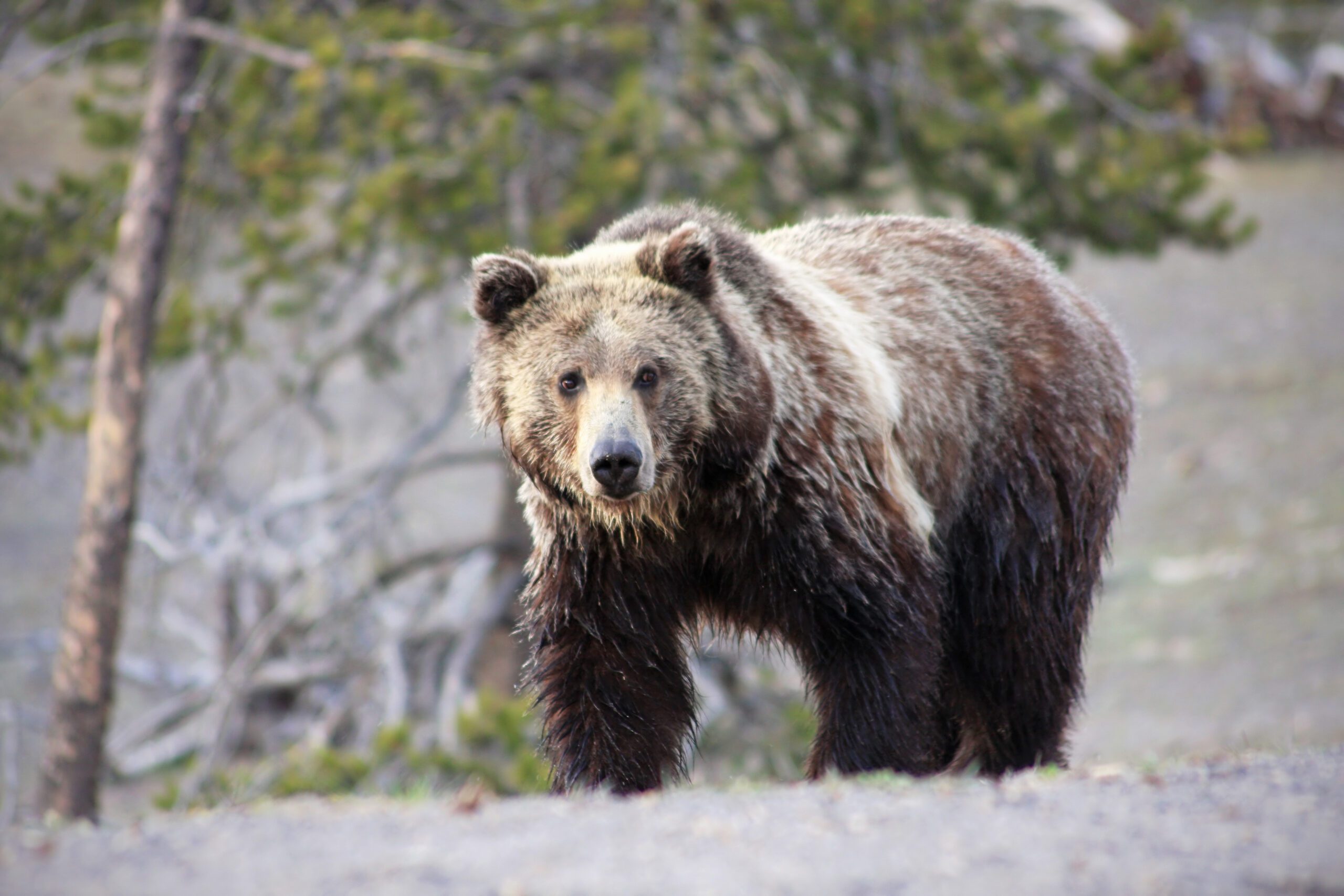By Benjamin Alva Polley EBS COLUMNIST
Historically, grizzlies inhabit 2% of their original range in the Lower 48. We are told that these numbers represent recovery and warrant a federal delisting from the Endangered Species List so states can manage a national treasure. In this article, we will look at bears’ historical range and population, how we got to this point, and examine Montana’s records for killing bears this past year and even the last five years. According to national polls, the public is for conserving bears and against big game hunting, but public polls from states with grizzlies in their “backyards” are more nuanced.
In the past three years, three states petitioned the federal government to delist grizzly bears from the Endangered Species List. The legislation, created by Idaho, Montana and Wyoming, is called the Grizzly Bear State Management Act. On Dec. 7, 2021, Montana’s most recent petition for delisting was advanced by Republican lawmakers and signed by Gov. Greg Gianforte. Wyoming petitioned the federal government on Jan. 10, 2022, and Idaho filed the petition on March 9, 2022. The U.S. Fish and Wildlife Service denied Idaho’s petition.
At Montana’s State Capitol, the House and the Senate are pushing for the delisting of grizzlies around the Greater Yellowstone and the Northern Continental Divide ecosystems. These politicians canvassing for delisting want to see bears managed solely by the state, favor grizzly hunting, and believe the bear populations have recovered. The state thinks it can manage grizzly bears alone.
Over the next year, the U.S. Fish and Wildlife Service will wrestle with whether to delist grizzlies from the Endangered Species Act, allow the States of Montana or Wyoming to manage them, and possibly open up a lottery to hunt them.
According to estimated historical populations, 50,000 grizzlies once roamed the Lower 48 from the Pacific Ocean to the Mississippi River and from Mexico to the Canadian Border, not including Alaska. From 1850 to 1950, during westward expansion, settlers and fur traders drastically reduced grizzly numbers to about 98% of their original range. The bears that survived this onslaught hid in remote mountainous regions in Montana and Wyoming. Today, an estimated 2,000-plus live primarily in Montana and Wyoming, with a few volunteers showing up in Idaho and Washington. Still, they usually don’t last long—before being shot accidentally by hunters thinking they were black bears.
In 1973, the Greater Yellowstone Ecosystem grizzly population was as low as 225. The Department of the Interior sought help in recovering grizzly numbers. It formed the Interagency Grizzly Bear Study Team, a committee of biologists responsible for long-term grizzly monitoring and research in Greater Yellowstone. This interagency team shares data collection with the mission of producing reliable science to inform species management. Grizzlies were listed as endangered in 1975 and protected by federal law until their numbers recovered. The IGBST created six grizzly bear areas where numbers could recover. Only two of the six have possibly recovered: the Greater Yellowstone Ecosystem, with approximately 1,000 bruins; the Northern Continental Divide Ecosystem, which includes Glacier National Park and the Bob Marshall Wilderness, with a population of about 1,100. Remember, these are all estimates and not on-the-ground numbers.
Montana Fish, Wildlife and Parks have killed 129 grizzlies since 2018. In 2018, they killed 18 brown bears; 2019 (27); 2020 (25); 2021 (26); and 2022 (33). These statistics don’t include this year’s euthanizations for the entire state of Montana. The states of Idaho and Wyoming didn’t respond to my information requests for their statistics from the last five years. If Wyoming had similar numbers as Montana, the two states’ combined euthanizations could add up to approximately 60 bears removed from the gene pool yearly.
Are any bears poached by ranchers and hunters and not reported? How many are hit by a vehicle whose driver couldn’t identify the animal because it was late at night and the creature ran far from the road and died of internal injuries? Maybe a dozen?
How many grizzlies are accidentally killed each year by hunters, either protecting themselves, like the mother grizzly in the Whitefish Range a few days ago, or mistakenly identified as black bears?
This year, 24 grizzlies have died or were found dead in Greater Yellowstone, with over 60% of those deaths happening in Wyoming, according to the United States Geological Survey. “So far, there were 15 grizzly bear deaths in Wyoming, seven in Montana, and two in Idaho, the data shows. There were 48 grizzly bear deaths last year in total,” reported Sofia Saric for the Caspar Star-Tribune in August 2023.
Many bears are killed each year without threats of being hunted.
So, how does the general public feel about delisting and hunting?
When it comes to polling, numbers yo-yo all over the place. A Marist Poll in November 2015 found “the majority of Americans,” 56%, are against sport hunting, and for most Americans, 86% find big game hunting to be “especially distasteful.” Hundreds of thousands of comments were submitted in response to whether the federal government should delist grizzlies, and many overwhelmingly opposed delisting and sport-hunting. But public opinion is unique within grizzly habitat and its surrounding areas, including Montana.
Earlier this year, Montana Fish, Wildlife and Parks and the University of Montana unveiled research into the public attitudes of Montanans. Alex Metcalf, a University of Montana professor and co-author of the study published in Conservation Science and Practice, told the Bozeman Daily Chronicle: “We found 80% to 90% of respondents think bears have a right to exist—that they make Montana special and that we need to learn to live with them.”
Interestingly, over 80% of respondents wanted grizzly hunting: 30% supported a limited hunting season that wouldn’t impact populations, 49% endorsed enough hunting to manage the population, and just under 4% wanted no limits on grizzly hunting. Almost 17% of respondents said grizzlies should never be hunted, as Isabel Hicks of the Bozeman Daily Chronicle reported.
The public in these states might be for hunting the bears if they have fully recovered, but the justifications for state management should be backed by science.
Many scientists claim our state politicians are making decisions based on special interests, misinformation, fears and lack of scientific facts to back their decision-making.
The question becomes—since many of these grizzlies wander in and out of national parks, national forests, wilderness areas, and even walk back and forth between states—should it be up to the states to decide whether to hunt them? Or is it more a collective question to be considered by all U.S. citizens since we as a nation are the public landowners of national forests and national parks?
Grizzlies are part of our national wildlife heritage, not state commodities, and should be handled by national experts.
Benjamin Alva Polley is a place-based storyteller with stories published in Outside, Adventure Journal, Popular Science, Field & Stream, Esquire, Sierra, Audubon, Earth Island Journal, Modern Huntsman, and other publications at his website www.benjaminpolley.com/stories. He holds a master’s in Environmental Science and Natural Resource Journalism from the University of Montana.













